
|
|
|
|
|
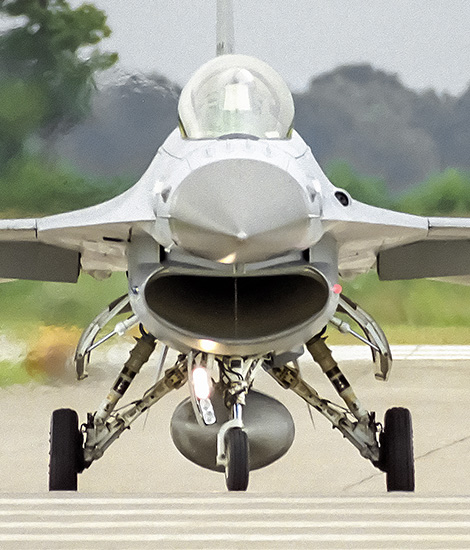
|
Main Operating Base Volkel; Volkel, August 8, 2001
The Largest F-16 Base in the Netherlands; Text and Photograph's by Alex van Noye
Nowadays Volkel Air Base in the Netherlands is the largest F-16 airbase of the country and contains three operational F-16 units. Volkel is together with Leeuwarden and Twenthe one of the Main Operating Bases of the Royal Netherlands Air Force. The F-16 is a multirole aircraft and was sent a few times to Yugoslavia.
In 1940 the Germans began with the construction of an airport near the village Odiliapeel. It was a nachtlandeplatz (air base for night fighters) for fighter planes of the Luftwaffe. This location had during the Second World War a strategically located position in the Netherlands. Allied bombers followed during that period the major rivers in the Netherlands to the Ruhr area in Germany. This happened especially in the night hours. The rivers were at that time an important landmark. Deelen Air Base had the same task as Volkel on the north side of these large rivers. Volkel was used during the Second World War by several German units. Volkel Air Base was officially established on April 1, 1950 as an airbase of the Royal Netherlands Air Force. The 1st Tactical Fighter group was founded in Volkel in 1951. The group consisted of the no 311 Squadron and the no 312 Squadron. Later also the no 306 Squadron would operate from Volkel. Today, Volkel is the largest F-16 airbase in the Netherlands with three operational units. Volkel is together with Leeuwarden and Twenthe one of the Main Operating Bases of the Royal Netherlands Air Force. The F-16 Fighting Falcon is nowadays the only combat aircraft which is used in the Dutch Air Force. Since 1985 the Test Group Volkel was founded for the Dutch Air Force. This unit would be used to test the weapons and tactics which will be used on the F-16. The J-653 was the only F-16 which was used by the Royal Netherlands Air Force Test Group. Eventually Leeuwarden Air Base took over this test tasks in June 1999. The J-653 flew for many years with the Dutch Air Force roundel and the golden eagle on the tail of the aircraft.
Since the beginning of its existence was the no 306 Squadron based at several different locations in the Netherlands and abroad. The unit has been stationed at RAF G端tersloh, B端ckeburg, RAF Laarbruch, Deelen and Twenthe and there were deploy- ments to Volkel Air Base. The no 306 Squadron was soon equipped with the Republic F-84E Thunderjet with several cameras in the tip tanks. After the RT-33, this was used
|
|
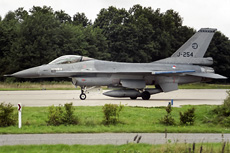
|
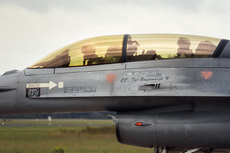
|
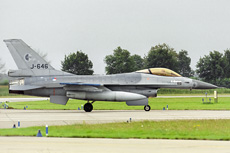
|
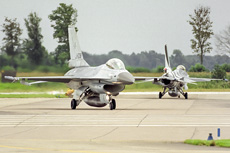
|
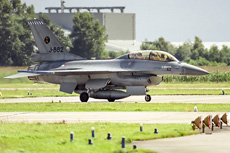
|
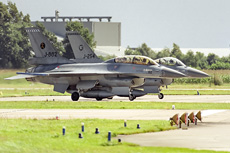
|
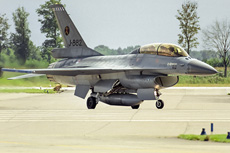
|
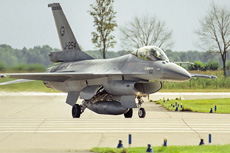
|
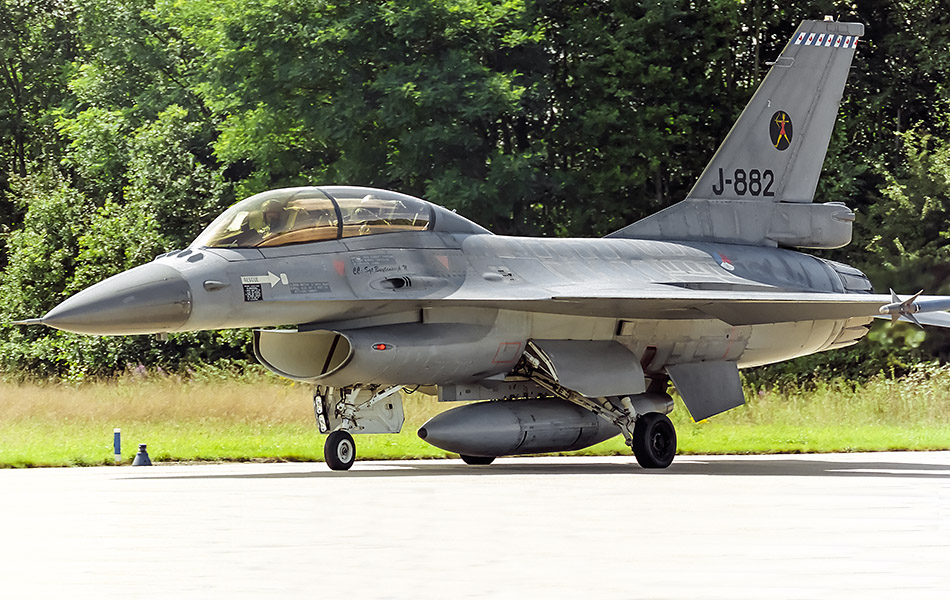
|
as a temporary solution, the unit switched in 1956 to the RF-84F Thunderflash. In 1962, the unit flew from Twenthe and the no 306 Squadron was the first unit of the Royal Netherlands Air Force which was going to fly the F-104 Starfighter. Since 1969 the no 306 Squadron was permanently stationed at Volkel. Because the unit was not part of the attack fleet, the squadron operated during exercises from the De Peel Air Base in Limburg. In 1974, the Starfighters were equipped with the Orpheus photo pod for the reconnaissance mission. This pod is nowadays still in use. In 1983, the no 306 Squadron switched to the F-16. There were some minor adjustments been made to the aircraft to make it suitable for the Orpheus pod. In the late 90s there were plans to disband the no 306 Squadron. But this did not happen due to a mandate performance during the Kosovo crisis.
The no 311 Squadron was founded on May 1, 1951 as the first flying squadron which was founded at Volkel Air Base. The emblem of the unit consists of a blue circle containing an image of an eagle which is hunting. The eagle in the logo of the 311 Squadron symbolizes the determination and speed in carrying out its tasks. The text "Ut Aquila Preadans" means "As an eagle which is diving on its target". This statement represents the methods of the squadron. The unit flew in its early years with the F-84E Thunderjet. The tasks of the no 311 Squadron were at that time; air defense, ground attack and support of ground troops. The unit was from 1955 equipped with the F-84F Thunderstreak. In 1962 the SACEUR (Supreme Allied Commander Europe) was founded which demanded that at Volkel a Quick Reaction Alert (QRA) was stationed which is standby 24 hours a day, 7 days a week. The no 311 Squadron was the first squadron at Volkel Air Base which switched to the F-104G Starfighter. The Starfighter arrived in 1965 at Volkel Air Base. The Starfighter was replaced in 1982 by the General Dynamics F-16 Fighting Falcon. Until today the unit flies with this type of aircraft. In the past, the no 311 Squadron was sent several times to crisis areas in the Netherlands and abroad like the other F-16 units. In 1994, 250 people were sent to the Italian airbase Villafranca. The Dutch detachment at this airbase took part in the operation "Deny Flight". The F-16s are guarding the no fly zone which is proclaimed by the UN over Bosnia.
In 1951, the no 312 Squadron was founded. The badge of the unit consists of two yellow swords which are crossed with a red lightning bolt through it. The squadron motto is "Audax Cum Consilio" and means Encourage and discreet. A year after the founding the unit flew 25 Thunderjets. The task of the squadron consisted mainly of conducting interceptions and formation flying. Since 1956 the unit would receive the F-84F Thunderstreak. The unit would fly for approximately 10 years with these aircraft, because in 1966 the Lockheed F-104G Starfighter made its debut at the no 312 Squadron. From 1960, the no 311 Squadron was merged together with the no 312 Squadron for a new task. This task was a strategic task. The American branch of the NATO in Europe was considered as not strong enough to protect itself against a mass attack by the Soviet Union. For this reason, the NATO decided to place nuclear weapons on multiple airfields. Volkel was one of those airfields. The Americans were going to guard and manage the weapons depots at Volkel. Until today, the Dutch government denies the presence of nuclear weapons at Volkel. The no 312 Squadron has the NATO Response Force (NRF) task, which are the same tasks as the no 306 and no 311 Squadron. The NRF is a part of NATO, which quickly can be used worldwide if the policy requires. If NATO decides that the NRF is deployed, the organization can have up to 25,000 NATO troops which can operate globally within five days. From 1985, the no 312 Squadron is flying the F-16.
|
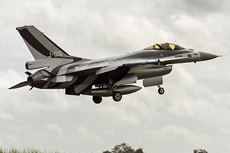
|
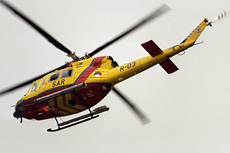
|
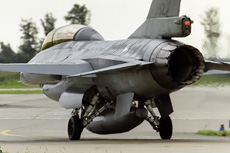
|
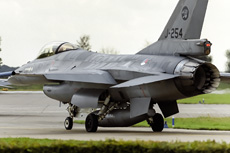
|
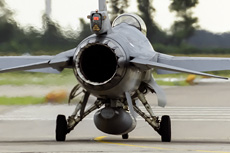
|
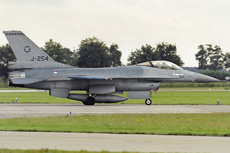
|
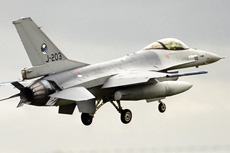
|
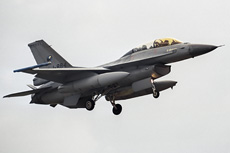
|
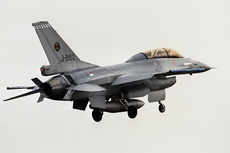
|
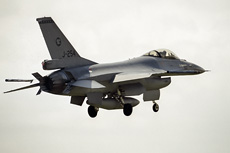
|
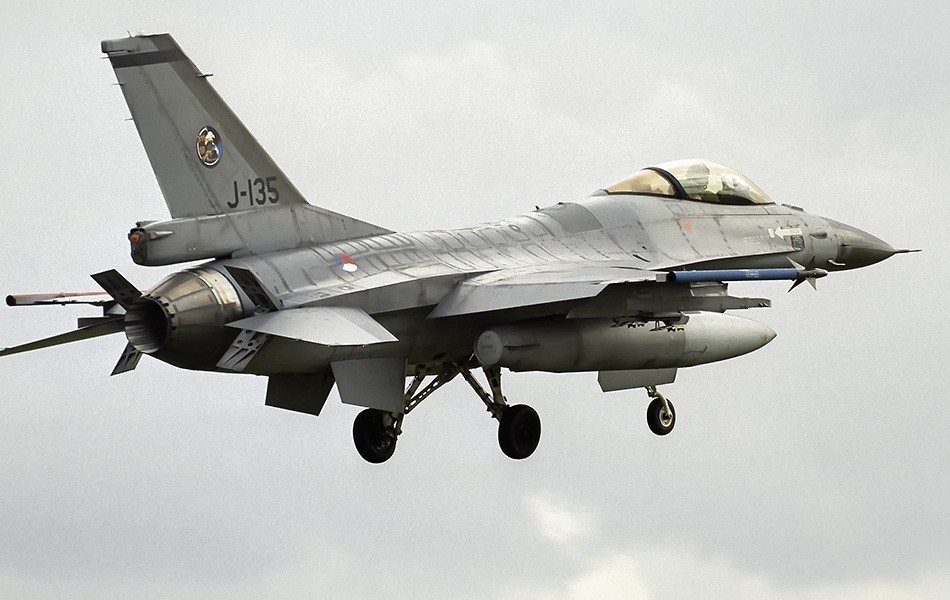
|
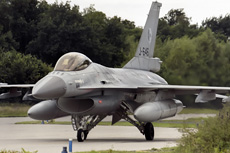
|
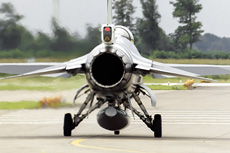
|
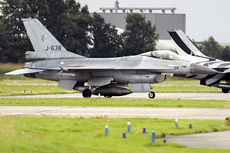
|
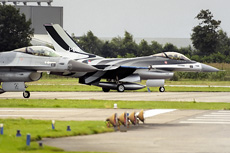
|
|
|

|







